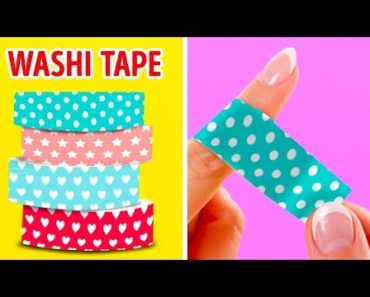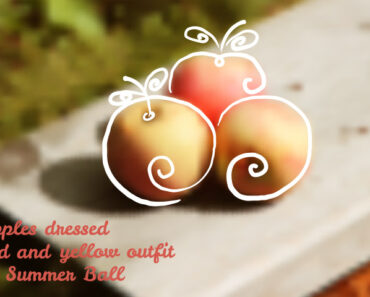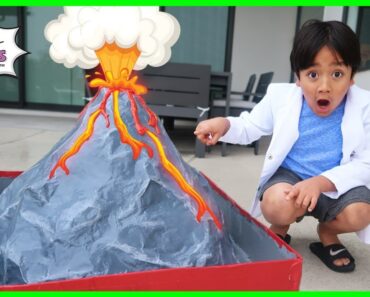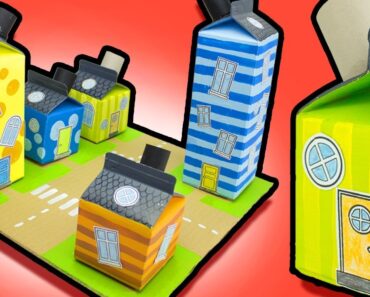The camel, commonly known as the “Ship of the Desert,” is an animal found in the deserts of Africa and Asia. It is a popular mode of transportation in such regions. This large animal is also domesticated by people in certain regions. Not only can it carry humans, but also take on heavy loads and walk over long distances. Its scientific name is ‘Camelus.’
There is a lot to learn about this tall and strong creature. The following are some interesting camel facts for kids that will make children go, “Wow!”.
Camel Facts For Kids
- A camel is usually found in deserts. However, it can survive in cold climates, too.
- There are two main types of camels. They are primarily classified according to the number of humps on their back. The one-humped camel is known as the dromedary camel, while the two-humped camel is either the domesticated bactrian camel or the wild bactrian camel.
- An average dromedary camel can stand 7.2 to 11.2 feet tall and weigh around 880 to 1,320 pounds. An average adult bactrian, on the other hand, can be about 10 to 11.5 feet long and weigh anywhere between 990 to 1,100 pounds (1).
- A female camel is called ‘cow,’ while a male camel is called ‘bull.’ Baby camels are called ‘calves,’ and a male baby camel is generally called ‘bull calf.’
- Dromedary camels are usually found in regions with arid climates, such as the Sahara Desert, the Middle East, India, and Southwest Asia, while wild dromedary camels thrive in Australia.
- Bactrian camels are mostly domesticated and are endemic to the dry, rocky deserts of East and Central Asia. They are generally found in the cold deserts of Uzbekistan, Kazakhstan, Russia, China, and Mongolia.
- Calves start developing humps only after they begin eating vegetation. These humps help camels survive under the hot sun without food or water for an extended period. When the hump is empty, it shrinks and slides lower, hanging at the camel’s side.
- Contrary to popular belief, a camel does not store food or water in its hump. Instead, the hump holds fat that breaks down to provide nutrition to the camel when food and water are scarce. A camel can go over a week without water and months without food.
- The legs of a camel are long and sturdy. It moves its legs of one side together and then the other side together when walking. It can carry around 200 pounds of weight at one time and can walk about 20 miles per day (1).
- The broad feet help distribute the the camel’s weight over a large area of sand and prevent its legs from sinking. Its foot has two toes that are heavily padded at the bottom to protect it from extreme conditions.
- The camel has oval-shaped red blood cells that can flow easily, even in the state of dehydration when the blood thickens. The blood cells are elastic enough to expand to twice their size to be able to hold lots of water whenever the camel gets a chance to drink (2). This is why a camel can drink up to 32 gallons of water at a time.
- In deserts, the camel can survive on dried grass and thorny vegetation, including cactuses. It also eats twigs, date stones, desert bushes, fish meat and bones, and so on. It mostly eats salt-rich plants. Some camels even drink brackish or salty water.
- A camel’s mouth has a thick leathery lining that enables the camel to eat rough and thorny plants with ease.
- Camels have a stomach that is divided into three separate chambers, unlike other herbivorous mammals (ruminants) that have four stomach chambers.
- Camels can ruminate their food by regurgitating it back up from their stomach and chewing it again.
- Camels have a thin nictitating membrane that acts like a third clear eyelid, protecting their eyes from sand or dirt that could blow into its eyes in the desert. The dual rows of long lashes also provide extra protection to their eyes (3).
- A camel’s sharp eyesight enables it to spot threats from a distance as far as three to four kilometers.
- A camel can open and close its nostrils at will. This helps protect them from inhaling sand. The nostrils also trap moisture from the exhaled air so the body can use it to conserve water.
- A camel’s body retains water, and hence, it hardly sweats even in high temperatures. Camels also tend to huddle together to protect themselves from the strong winds.
- In extremely harsh summer temperatures, a camel’s fur tends to lighten in color, which helps reflect sunlight and protects it from breaking a sweat. Camels generally look for food at night to avoid excess loss of energy and water under the harsh sun.
- The kidneys of a camel help conserve water by producing highly concentrated urine (4).
- Camels are as fast as horses and can sprint at around 65km/h (40mph).
- Apart from transportation, camels are also used for their wool, which can be made into highly insulated coats and jackets. It is also used to make plush rugs.
- A camel’s dung is used as fuel in some countries, while its milk is considered more nutritious and easily digestible than the milk of a cow or a sheep. Its milk also contains vitamins, minerals, and protein in higher amounts compared to the milk of other animals.
- The ears of camels have hair that protects it from sand and dust. It can swivel its ears to protect itself during dust storms.
- If attacked, the camel uses its sharp canines to bite and long legs to kick its predators.
- Camels tend to spit cud when threatened or provoked.
- The average lifespan of a camel is between 40 and 50 years.
- The calves of bactrian camels weigh about 37kg, and become fully mobile within a day (5).
- The wild bactrian camel has been declared as a “critically endangered species” by the International Union for Conservation of Nature.
Moving in the desert is neither easy for humans nor for animals. But mother nature has made camels highly adaptable to the harsh climate of the desert. This large animal has also fought wars for humans over centuries. No wonder the Arabs hold the camel in such high regard that they have more than 100 words referring to the camel alone.

































